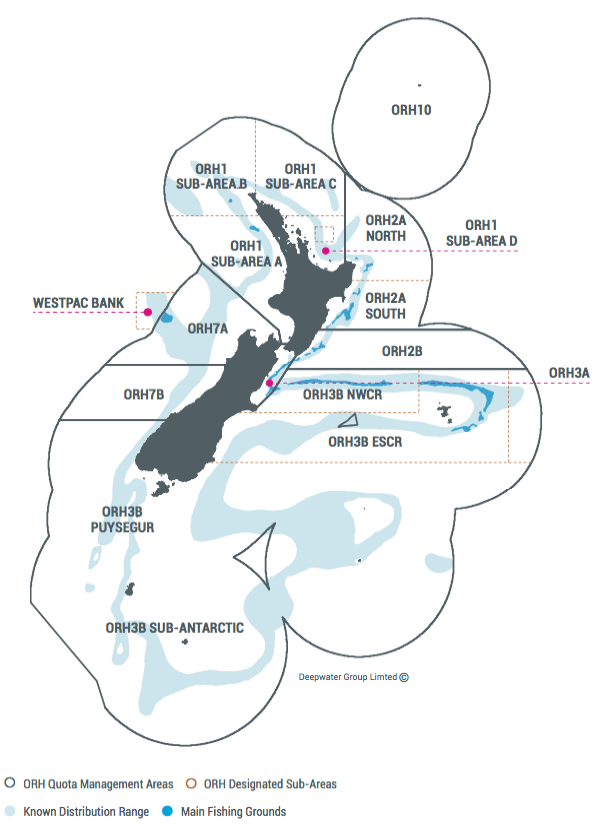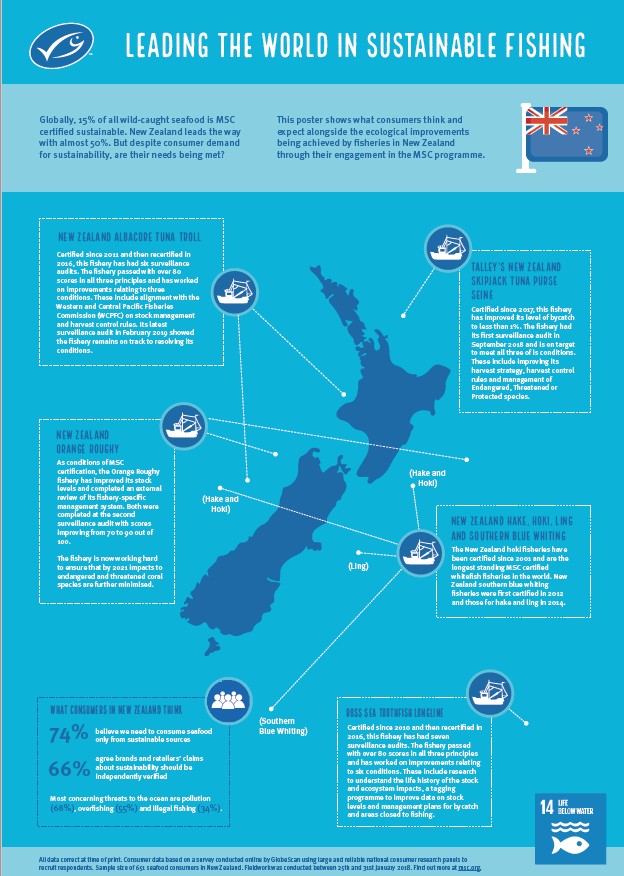Orange Roughy (ORH)
Orange roughy fisheries are sustainably managed - click here.
In August 2022, ORH 3B ESCR (*), ORH 3B NWCR & ORH 7A were re-certified sustainable under the Marine Stewardship Council's (MSC) programme - click here.
(*) Note, due to a current stock assessment not being available, during the First Surveillance Audit in October 2023, Deepwater Council self-suspended certification for the ORH 3B ESCR fishery, implemented an In Transition to MSC (ITM) and entered the fishery in a Fishery Improvement Plan (FIP) instead. (We wrote about this in a November news post). To read the Report of the First Surveillance Audit published on 10 December 2023, click here. You can our track progress against this FIP on the MSC Track a Fishery webpage.
New Zealand has the largest and longest-standing orange roughy fisheries in the world. However, concerns have been raised in the past about the status of orange roughy stocks. To improve the situation, more science-based information has been collected to inform management, and catches have been reduced or stopped to allow stocks to rebuild at the fastest rate possible. Better information on stock status from increased science has found stocks are rebuilding as a result of this cautious management approach.
Three of our main orange roughy fisheries, representing 73% of New Zealand's orange roughy harvest, have been certified sustainable by MSC since 2016 (noting ORH 3B ESCR is current self-suspended with the aim to be recertified at the next assessment).
From overfishing to sustainable delicacy - click here to view a brief timeline of how the science and management of New Zealand's orange roughy fisheries have advanced in the last three decades (up to 2017).
Common Name
Orange roughy
Scientific Name
Hoplostethus atlanticus
Ministry Code
ORH
Quick Facts
- Trawl fishery (depths of ~800-1,200m)
- Managed as nine main fish stocks: Northern North Island (ORH 1), East Cape (ORH2 A North), Mid-East Coast (ORH 2A South, ORH 2B, and ORH 3A), Northwest Chatham Rise (ORH 3B), East and South Chatham Rise (ORH 3B), Puysegur (ORH 3B), Sub-Antarctic (ORH 3B), Challenger Plateau (ORH 7A), west coast South Island (ORH 7B)
- DWG represents each stock and 92% of the total quota
- Live near seabed in deepwater and at times move up the water column to feed on crustaceans, fish, and squid
- Start breeding around 20-30 years, slow-growing, and may live for more than 120 years
- For every 1,000 adult roughy, around 45 are harvested each year, leaving 955 to ensure healthy stock sizes for the future
- Around 70% of the roughy catch is certified sustainable by the Marine Stewardship Council
- Firm white flesh with a delicate almost shell-fish like flavour
Related Pages
Fisheries Management
Environmental Management
MSC Certification
Certification Timeline
Seafood
Operational Procedures - Orange Roughy



